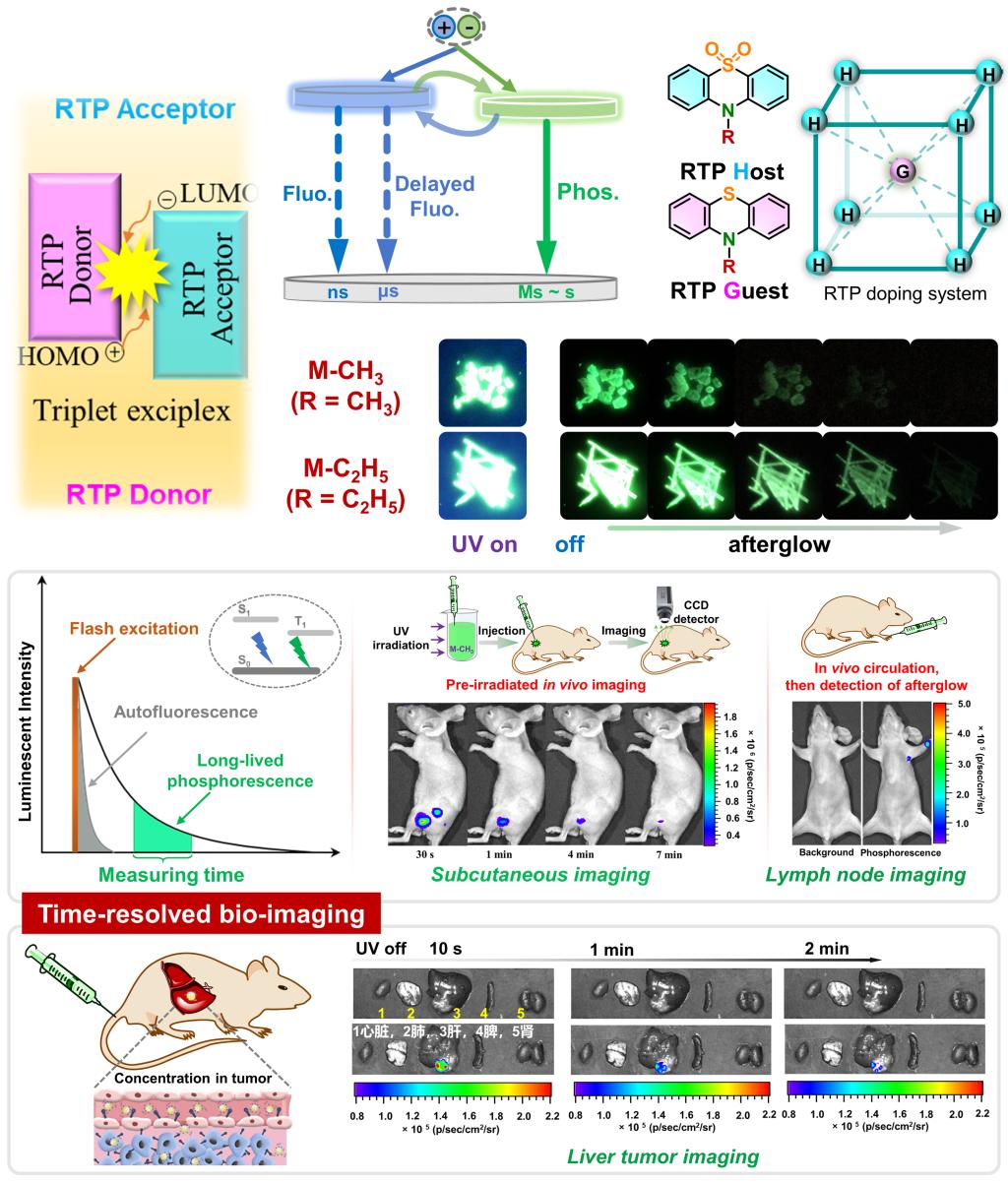Recently Professor Li Zhen's team from Tianjin University together with Professor Ding Dan's team from Nankai University made a breakthrough in the development and application of high-efficiency and long-life pure organic room-temperature phosphorescent (RTP) materials.
The "luminous pearl-like" material they developed can continue to emit light for nearly half an hour after being exposed to light for less than ten seconds.

The team processed this material into nanoparticles and injected them into mice. These nanoparticles aggregated in tumor cells. By capturing the luminescent signal of the nanoparticles, researchers located tumor cells and achieved ultra-high contrast phosphorescence imaging.
Related research result High Performance of Simple Organic Phosphorescence Host–Guest Materials and their Application in Time Resolved Bioimaging was published in the top journal Advanced Materials in the field of materials science.
Traditionally, most of the luminescent materials used in biomedicine field are fluorescent materials whose common feature is extremely short luminescence lifetime, usually less than one ten-millionth of a second. Moreover, the fluorescent materials are as inseparable from the luminescence excitation source as the wired telehpone from its line, greatly limiting their application.
The organic room-temperature phosphorescent material developed in this research is more like a rechargeable mobile phone, which can maintain luminescence for several minutes after one single excitation. Therefore, after injecting the excited material into the living body, researchers were able to “communicate” with it about its position and intensity by capturing its luminescence. The position and intensity information of these materials can usually reflect the internal and external microenvironment status of the tissues and by further processing and identifying the information, the physiological conditions of these tissues can be evaluated, thereby helping doctors make early diagnosis of diseases.
"At the present stage, the application of these materials in bioimaging and disease diagnosis is more like a ‘pager’ era, where only one-way communication can be established. In the future, we will further improve the intelligent properties of the materials, such as improving the targeting ability and granting materials functions of drug delivery, etc., so that we can realize an upgrade from visible (imaging) to effective (treatment), and continuously promote the iterative upgrade of materials." Professor Li Zhen said.
In addition, the new material displays phosphorescent effect at room temperature with dual stimulus response to mechanical force and heat, so it is expected to have broader application prospects in thermal printing and information encryption.
By Ren Xiangyun
Editor:Eva Yin






